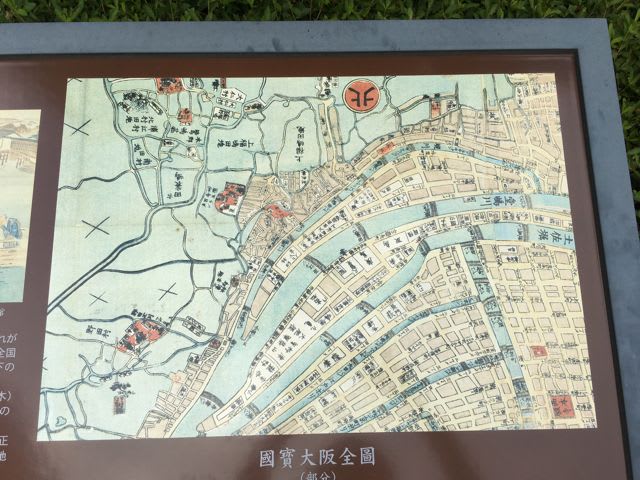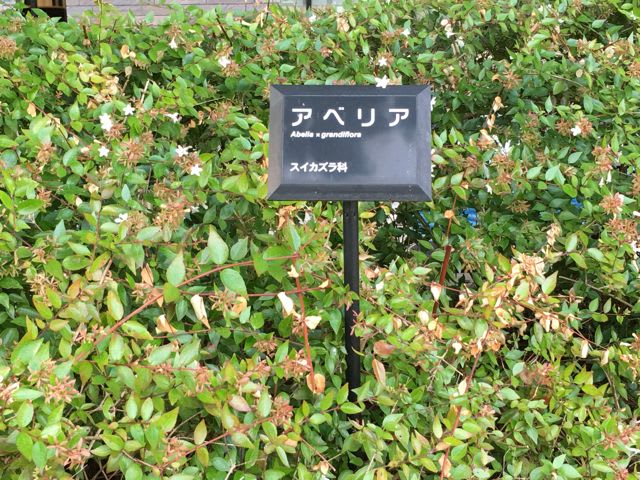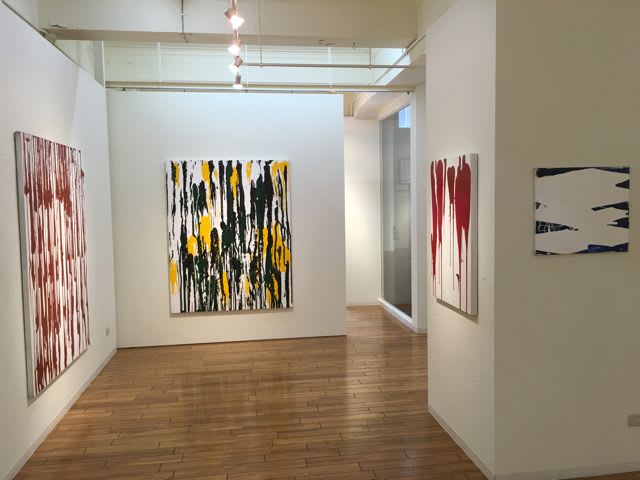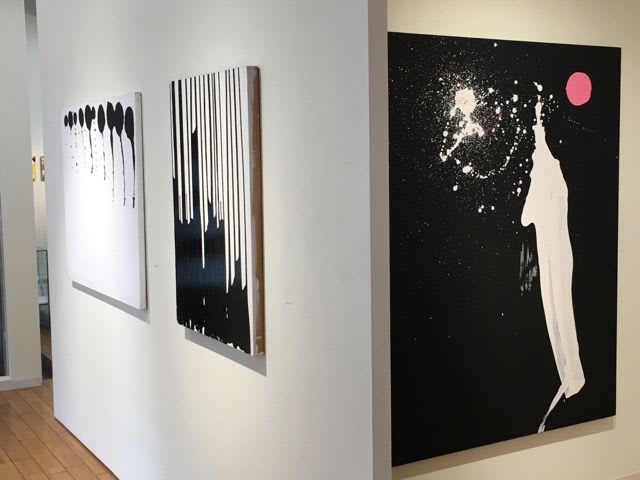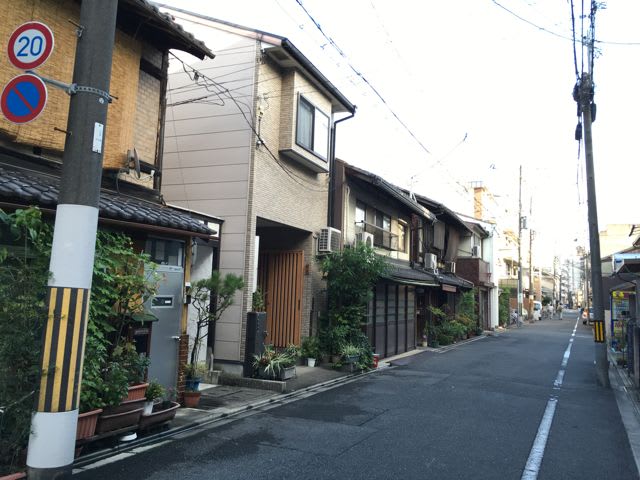2016年8月13日-1
死の過程("A TREATISE ON COSMIC FIRE", pp.734-737)
Bailey, Alice A. 1925. A Treatise on Cosmic Fire. xxvi+1367pp. Lucis Publishing Company. [B20000901, $60.00+39.00/20]
「
"To the God Who is in the FIRE and Who is in the waters;
To the God Who has suffused Himself through all the world;
To the God Who is in summer plants and in the lords of the forest;
To that God be adoration, adoration." —Sh’vet Upanishad, II.17.
火の中にいる神と水の中にいる神に、、
全世界を通して自身をいっぱいにした神に、、
夏の植物たちにいる神と森の主たちにいる神に、、
その神に尊崇をたてまつります、尊崇をたてまつります。
」
[20160813零試訳]]
上記は、Alice A. Bailey (1925)が、『Shvetashvatara Upanishad シュヴェーターシュヴァタラ・ウパニシャッド』
(https://en.wikipedia.org/wiki/Shvetashvatara_Upanishad[受信:2016年8月13日。])という、古ウパニシャッド文献からの引用を行なったものである(らしい)。日本語版ウィキペディアでは、英語版はほとんど訳されていない。
「黒ヤジュル・ヴェーダに付属し、古ウパニシャッドの中では、中期の「韻文ウパニシャッド」に分類される[1]。
梵我一如思想が述べられる。「シュヴェーターシュヴァタラ」とは、文中で言及される聖者の名」
(ウィキペディア。https://ja.wikipedia.org/wiki/シュヴェーターシュヴァタラ・ウパニシャッド[受信:2016年8月13日。])
とある。
自然世界には八百万の神々が棲むとともに、それらはGodという単数形で、一つであるという主張と取れる。
Alice A. Bailey (1925) の『A Treatise on Cosmic Fire 宇宙の火に関する論文』に、人の死の過程の段階が述べられている。その部分を訳出することにする。
なお、『宇宙の火に関する論文』の英語原文のPDFは、電網上で供せられている。
「
【/p.734】
(b.) The Nature of Pralaya. We can view pralaya as the work of "abstraction," and as the method which brings the form under the Destroyer aspect of Spirit, working ever under the Law of Attraction, of which the Law of Synthesis is but a branch. The basic law of the system is that which governs the relation of all atoms to the aggregate of atoms, and of the Self to the Not-self. It is (from the occult standpoint) the most powerful force-demonstration in the system, and should the law inconceivably cease to work, instantaneously the system and all forms therein, planetary, human and other would cease to be. By an act of will the planetary schemes persist, by an act of will the system IS; by an act of the egoic will man appears. When the Will of the Logos, of the Heavenly Man, and of the human divine Ego is turned to other ends, the substance of Their vehicles is affected, and disintegration sets in. The five types of pralaya which concern the human unit are as follows:
(1) The period of pralaya between two incarnations. This is of a triple nature and affects the substance of the three vehicles, physical, astral and mental, reducing the form to its primitive substance, and dissipating its atomic structure. The energy of the second aspect (that of the form-builder) is withdrawn by the will of the Ego, and the atoms composing the form become dissociated from each other, and are resolved into the reservoir of essence to be re-collected again when the hour strikes. This condition is brought about gradually by stages of which we are aware:
二つの転生の間のプララヤの期間。これは三重の本性のものであり、物質的、アストラル的〔星幽的〕、そして精神的〔心的〕という、3つの乗り物の質料〔構成実質〕に影響し、形態をその原始的質料へと分解し reduce、その原子構造を散らす。第二様相のエネルギー(形態建設のエネルギー)はエゴ〔我〕の意志によって退出され【p.734/p.735】、形態を構成する原子たちは互いに引き離された状態となる。そして、本質の貯蔵庫のなかへと分解される。時が来たら、原子たちは再度、再び集められる。
The first stage is the withdrawal of the life force in the etheric vehicle from the threefold (dense, liquid and gaseous) dense physical body and the consequent "falling into corruption," and becoming "scattered to the elements." Objective man fades out, and is no more seen by the physical eye, though still in his etheric body. When etheric vision is developed, the thought of death will assume very different proportions. When a man can be seen functioning in his etheric physical body by the majority of the race, the dropping of the dense body will be considered just a "release."
第一段階は、エーテル的乗り物における生命力の、三重の〔3つの部分が折り重なった〕(濃密の、液体の、そして気体の)濃密物質体からの退出と、結果としての《腐敗への落ち込み》と、そして《要素〔構成分子〕へ消散される》ことになることである。客観的人間は次第に消えていき、もはや肉眼によっては見られない。しかし、自分のエーテル体のなかに留まっている。エーテル視力が発達するとき、死についての考えは、大変異なったものと取られるだろう。人がエーテル的物質体のなかで機能することを、その種族の大部分によって見ることができると、濃密体の落下はたんなる《解放》だと考えられるだろう。
The next stage is the withdrawal of the life force from the etheric body or coil, and its devitalisation. The etheric coil is but an extension of one aspect of the sutratma or thread, and this thread is spun by the Ego from within the causal body much as a spider spins a thread. It can be shortened or extended at will, and when the period of pralaya has been decided upon, this thread of light, or of solar fire (note the word "solar") is withdrawn, and gathered back to the atomic subplane where it will still vitalise the permanent atom and hold it connected within the causal body. The life impulses are then—as far as the physical plane is concerned—centralised within the atomic sphere.
次の段階は、エーテル体または渦巻きからの生命力の退出と、エーテル体の非活性化である。エーテル的渦巻きは、ステラートマまたは織り糸 thread の一面の延長にすぎず、この織り糸は、蜘蛛が織り糸を紡ぐように、原因体 causal body 内のエゴによって紡がれる。その織り糸は、意のままに短くされたり伸ばされたりできる。そしてプララヤ〔非活動〕の時期が決定されたときには、この光の、または太陽の火の(《太陽の》という言葉に注意しなさい)、織り糸は引っ込められ、原子亜界へと戻って集められる。その亜界では、縫い糸は永久原子を活性化して、原因体内に縫い糸を結びつけられた状態を保つだろう。生命衝撃はそれから、物質界に関する限り、原子球内部に集中される。
The third stage is the withdrawal of the life force from the astral form so that it disintegrates in a similar manner and the life is centralised within the astral permanent atom. It has gained an increase of vitality through physical plane existence, and added colour through astral experience.
第三段階は、アストラル形態からの生命力の退出で、そうして同様の仕方でアストラル形態は崩壊し、生命はアストラル永久原子内に集中される。それは、物質界での存在を通して活力の増加を得たのであり、またアストラル的経験を通して色彩を加えたのである。
The final stage for the human atom is its withdrawal from the mental vehicle. The life forces after this fourfold abstraction are centralised entirely within the egoic sphere; contact with the three lower planes is still inherently possible by means of the permanent atoms, the force centres of the three personality aspects.
人原子の最終段階は【p.735/p.736】、精神的〔心的〕乗り物からの人原子の退出である。四重の抽出の後の生命諸力は、まったくエゴの球内に集中される。3つの低位の界との接触はそれでも、3つの個人の側面〔様相〕の力の諸中心である永久原子たちによって、本来的に inherently 可能である。
In each incarnation the life forces have gained through the utilisation of the vehicles,
a. An increased activity, which is stored in the physical permanent atom.
b. An added colouring, which is stored in the astral permanent atom.
c. A developed quality of strength, or purpose in action, which is stored in the mental unit.
各々の転生で、生命力は乗り物を使うことによって得たものとは、
a. 増加した活動、それは物質的永久原子に蓄えられる。
b. 加えられた色づけ、それはアストラル永久原子に蓄えられる。
c. 強さが発展した特質、または作用する目的、それは心的〔精神的〕単位に蓄えられる。
These are wrought into faculty in devachan.
Devachan [45, 46] is a state of consciousness, reflecting, in 【p.736/p.737】
-------
the Law of Retribution is the only law that never errs. Hence all those who have not slipped down into the mire of unredeemable sin and bestiality—go to the Deva-Chan. They will have to pay for their sins, voluntary and involuntary, later on. Meanwhile they are rewarded; receive the effects of the causes produced by them. "Of course it is a state, one, so to say, of intense selfishness during which an Ego reaps the reward of his unselfishness on earth. He is completely engrossed in the bliss of all his personal earthly affections, preferences, thoughts, and gathers in the fruit of his meritorious actions. No pain, no grief nor even the shadow of a sorrow comes to darken the bright horizon of his unalloyed happiness; for, it is a state of perpetual 'Maya.'...Since the conscious perception of one's personality on earth is but an evanescent dream that sense will be equally that of a dream in the Deva-Chan—only a hundredfold intensified." ....... "'Bardo' is the period between death and rebirth—and may last from a few years to a kalpa. It is divided into three sub-periods (1) when the Ego delivered of its mortal coil enters into Kama-Loka (the abode of Elementaries); (2) when it enters into 'Gestation State'; (3) when it is reborn in the Rupa-Loka of Deva-Chan. Sub-period (1) may last from a few minutes to a number of years—the phrase 'a few years' becoming puzzling and utterly worthless without a more complete explanation; Sub-period 2nd is 'very long'; as you say, longer sometimes than you may even imagine, yet proportionate to the Ego's spiritual stamina; Sub-period 3rd lasts in proportion to the good Karma, after which the monad is again reincarnated." ....... ..."Every effect must be proportionate to the cause. And, as man's terms of incarnate existence bear but a small proportion to his periods of inter-natal existence in the manvantaric cycle, so the good thoughts, words, and deeds of any one of these 'lives' on a globe are causative of effects, the working out of which requires far more time than the evolution of the causes occupied."—From Mahatma Letters to A. P. Sinnett, pp. 100, 105-106., 245Devachan. A state intermediate between two earth lives into which the Ego enters after its separation from its lower aspects or sheaths.
-------
【p.736/p.737】
the life of the Personality, that higher state which we call nirvanic consciousness, and which is brought about by egoic action. It is but a dim reflection in the separated units (and therefore tinged with selfishness and separative pleasure) of the group condition called nirvanic. In this high state of consciousness each separate identity, though self-realising, shares in the group realisation, and therein lies bliss for the unit. Separation is no longer felt, only unity and essential oneness is known. Therefore, as might be naturally deduced, there is no devachan for the savage or little evolved man, as they merit it not, and have not the mentality to realise it; hence, therefore, the rapidity of their incarnations, and the brevity of the pralayic period. There is little in their case for the Ego, on its own plane, to assimilate in the residue of incarnations, and hence the life principle withdraws rapidly from out of the mental form, with the resulting impulse of the Ego to reincarnate almost immediately.
When the life of the personality has been full and rich, yet has not reached the stage wherein the personal self can consciously co-operate with the ego, periods of personality nirvana are undergone, their length depending upon the interest of the life, and the ability of the man to meditate upon experience. Later, when the Ego dominates the personality life, the interest of the man is raised to higher levels, and the nirvana of the soul be-
【p.737/p.738】
comes his goal. He has no interest in devachan. Therefore, those upon the Path (either the probationary Path, or the Path of Initiation) do not, as a rule, go to devachan, but immediate incarnation becomes the rule in the turning of the wheel of life; this time it is brought about by the conscious co-operation of the personal Self with the divine Self or Ego.
(2) _The period between egoic Cycles_. Herein is hid the mystery of the 777 incarnations and concerns the relation of the unit to his group on the egoic plane, prior to the unfoldment of the fifth petal. It concerns man in the period between the savage stage and that of the disciple, when he is an average man but still in the two Halls. The mystery of all root races lies here, and the egoic cycles coincide with the building of racial forms, and civilisations. A man will reincarnate again and again in the various subraces of a root race until a certain cycle has been covered; then he may undergo a pralayic condition until in a later (and sometimes much later) root race he will respond to its vibratory call, and the egoic impulse to incarnate will again be felt. In illustration of this, we should bear in mind that the more advanced humanity of today did not incarnate until the fourth root race. These cycles are one of the mysteries of initiation, though one of the earlier mysteries, and are revealed at the second initiation as they enable the initiate to comprehend his position, to see somewhat the nature of the karmic impulse, and to read his own record in the astral light.
These might be considered the two lesser pralayic periods and concern primarily life in the three worlds.
(3) Next comes the period wherein the man has attained freedom. A man has at this stage succeeded, under law, in "abstracting" himself, the freed soul, from out of the matter of the three worlds. He has used and worked with deva substance and has gained all the vibratory contact possible, and has secured all the intended "realisations" and "revelations"; he can no longer be held imprisoned by the devas. He is free until, consciously and willingly, and in another round, he can return as a member of a Hierarchy to continue His work of service for the little evolved humanity of that distant time. As this concerns the seven paths of opportunity for a Master we will not deal with it here. 24647 This is the great human pralaya.
」
(A TREATISE ON COSMIC FIRE: pp.735-737)
死の際の出来事の順序("ESOTERIC HEALING: A TREATISE ON THE SEVEN RAYS VOLUME IV", pp.472-478)
〈Sequence of Events at Death 死の際の出来事の順序〉
「
Sequence of Events at Death
I feel that the best that I can do, in order to clarify this subject more completely, is to describe the sequence of events which happens at a death bed, reminding you that the points of final abstraction are three in number: the head for disciples and initiates and also for advanced mental types; the heart for aspirants, for men of goodwill, and for all those who have achieved a measure of personality integrity and are attempting to fulfill, as far as in them lies, the law of love; and the solar plexus for the undeveloped and emotionally polarised persons. All I can do is to tabulate the stages of the process, leaving you to accept them as an interesting and possible hypothesis awaiting verification; to believe them unquestioningly because you have confidence in my knowledge, or to reject them as fantastic, unverifiable and of no moment anyway. I recommend the first of the three, for it will enable you to preserve your mental integrity, it will indicate an open mind, and at the same time it will protect you from gullibility and from narrow-mindedness. These stages, therefore, are:
1. The soul sounds forth a "word of withdrawal" from its own plane, and immediately an interior process and reaction is evoked within the man upon the physical plane.
a. Certain physiological events take place at the seat of the disease, in connection with the heart, and affecting also the three great systems which so potently condition the physical man: the blood stream, the nervous system in its various expressions, and the endocrine system. With these effects I shall not deal. The pathology of death is well known and has received much study exoterically; much still remains to be discovered and will later be discovered. I am concerned, first of all, with the subjective reactions which (in the last analysis) bring about the pathological predisposition to death.
b. A vibration runs along the nadis. The nadis are, as you well know, the etheric counterpart of the entire nervous system, and they underlie every single nerve in the entire physical body. They are the agents par excellence of the directing impulses of the soul, reacting to the vibratory activity which emanates from the etheric counterpart of the brain. They respond to the directing Word, react to the "pull" of the soul, and then organise themselves for abstraction.
c. The blood stream becomes affected in a peculiarly occult manner. The "blood is the life," we are told; it is interiorly changed as a result of the two previous stages, but primarily as the result of an activity hitherto undiscovered by modern science, for which the glandular system is responsible. The glands, in response to the call of death, inject into the blood stream a substance which in turn affects the heart. There the life thread is anchored, and the substance in the blood is regarded as "death dealing" and is one of the basic causes of coma and of loss of consciousness. It evokes a reflex action in the brain. This substance and its effect will be questioned as yet by orthodox medicine, but its presence will later be recognised.
d. A psychic tremor is established which has the effect of loosening or breaking the connection between the nadis and the nervous system; the etheric body is thereby detached from its dense sheath, though still interpenetrating every part of it.
2. There is frequently a pause at this point of a shorter or longer period of time. This is allowed in order to carry forward the loosening process as smoothly and as painlessly as possible. This loosening of the nadis starts in the eyes. This process of detachment often shows itself in the relaxation and lack of fear which dying persons so often show; they evidence a condition of peace, and a willingness to go, plus an inability to make a mental effort. It is as if the dying person, still preserving his consciousness, gathers his resources together for the final abstraction. This is the stage in which—the fear of death once and for all removed from the racial mind—the friends and relatives of the departing person will "make a festival" for him and will rejoice with him because he is relinquishing the body. At present this is not possible. Distress rules, and the stage passes unrecognised and is not utilised, as it will some day be.
3. Next, the organised etheric body, loosened from all nervous relationship through the action of the nadis, begins to gather itself together for the final departure. It withdraws from the extremities towards the required "door of exit" and focusses itself in the area around that door for the final "pull" of the directing soul. All has been proceeding under the Law of Attraction up to this point—the magnetic, attractive will of the soul. Now another "pull" or attractive impulse makes itself felt. The dense physical body, the sumtotal of organs, cells and atoms, is steadily being released from the integrating potency of the vital body by the action of the nadis; it begins to respond to the attractive pull of matter itself. This has been called the "earth" pull and is exerted by that mysterious entity whom we call the "spirit of the earth"; this entity is on the involutionary arc, and is to our planet what the physical elemental is to the physical body of man. This physical plane life force is essentially the life and light of atomic substance—the matter of which all forms are made. It is to this reservoir of involutionary and material life that the substance of all forms is restored. Restitution of the commandeered matter of the form occupied by the soul during a life cycle consists in returning to this "Caesar" the involutionary world what is his, whilst the soul returns to the God Who sent it forth.
It will therefore be apparent that a dual attractive process is at this stage going on:
a. The vital body is being prepared for exit. b. The physical body is responding to dissolution.
It might be added that a third activity is also present. It is that of the conscious man, withdrawing his consciousness, steadily and gradually, into the astral and mental vehicles, preparatory to the complete abstraction of the etheric body when the right time comes. The man is becoming less and less attached
to the physical plane and more withdrawn within himself. In the case of an advanced person, this process is consciously undertaken, and the man retains his vital interests and his awareness of relationship to others even whilst losing his grip on physical existence. In old age this detachment can be more easily noted than in death through disease, and frequently the soul or the living, interested, inner man can be seen losing his grip on physical and, therefore, illusory reality.
4. Again a pause ensues. This is the point where the physical elemental can at times regain its hold upon the etheric body, if that is deemed desirable by the soul, if death is not part of the inner plan, or if the physical elemental is so powerful that it can prolong the process of dying. This elemental life will sometimes fight a battle lasting for days and weeks. When, however, death is inevitable, the pause at this point will be exceedingly brief, sometimes only for a matter of seconds. The physical elemental has lost its hold, and the etheric body awaits the final "tug" from the soul, acting under the Law of Attraction.
5. The etheric body emerges from the dense physical body in gradual stages and at the chosen point of exit. When this emergence is complete, the vital body then assumes the vague outline of the form that it energised, and this under the influence of the thoughtform of himself which the man has built up over the years. This thoughtform exists in the case of every human being, and must be destroyed before the second stage of elimination is finally complete. We will touch upon this later. Though freed from the prison of the physical body, the etheric body is not yet freed from its influence. There is still a slight rapport between the two, and this keeps the spiritual man still close to the body just vacated. That is why clairvoyants often claim to see the etheric body hovering around the death bed or the coffin. Still interpenetrating the etheric body are the integrated energies which we call the astral body and the mental vehicle, and at the centre there is a point of light which indicates the presence of the soul.
6. The etheric body is gradually dispersed as the energies of which it is composed are reorganised and withdrawn, leaving only the pranic substance which is identified with the etheric vehicle of the planet itself. This process of dispersal is, as I have earlier said, greatly aided by cremation. In the case of the undeveloped person, the etheric body can linger for a long time in the neighbourhood of its outer disintegrating shell because the pull of the soul is not potent and the material aspect is. Where the person is advanced, and therefore detached in his thinking from the physical plane, the dissolution of the vital body can be exceedingly rapid. Once it is accomplished, the process of restitution is over; the man is freed, temporarily at least, from all reaction to the attractive pull of physical matter; he stands in his subtle bodies, ready for the great act to which I have given the name "The Art of Elimination."
One thought emerges as we conclude this inadequate consideration of the death of the physical body in its two aspects: that thought is the integrity of the inner man. He remains himself. He is untouched and untrammelled: he is a free agent as far as the physical plane is concerned, and is responsive now to only three predisposing factors:
1. The quality of his astral-emotional equipment. 2. The mental condition in which he habitually lives. 3. The voice of the soul, often unfamiliar but sometimes well known and loved.
Individuality is not lost; the same person is still present upon the planet. Only that has disappeared which was an integral part of the tangible appearance of our planet. That which has been loved or hated, which has been useful to humanity or a liability, which has served the race or been an ineffectual member of it, still persists, is still in touch with the qualitative and mental processes of existence, and
will forever remain—individual, qualified by ray type, part of the kingdom of souls, and a high initiate in his own right.
□ 文献 □
Bailey, A.A. 1922. Letters on Occult Meditation. 375pp. Lucis Publishing Company. [B20000901, $26.00+39.00/20]
Bailey, A.A. 1925. A Treatise on Cosmic Fire. xxvi+1367pp. Lucis Publishing Company. [B20000901, $60.00+39.00/20]
Bailey, A.A. 1927. The Light of The Soul: A Paraphrase of The Yoga Sutras of Patanjali: with Commentary by Alice A. Bailey. xvii+458pp. Lucis Publishing Company. [B20000901, $35.00+39.00/20]
Bailey, A.A. 1932. From Intellect to Intuition. vii+275pp. Lucis Publishing Company. [B20000901, $21.00+39.00/20]
Bailey, A.A. 1934. A Treatise on White Magic. xiv+705pp. Lucis Publishing Company. [B20000901, $33.00+39.00/20]
Bailey, A.A. 1936. Esoteric Psychology I. xxv+460pp. Lucis Publishing Company. [B20000901, $27.00+39.00/20]
Bailey, A.A. 1950. Telepathy and The Etheric Vehicle. xi+219pp. Lucis Publishing Company. [B20000901, $21.00+39.00/20]
Bailey, A.A. 1951. Autobiography. xi+316pp. Lucis Publishing Company. [B20000901, $26.00+39.00/20]
Bailey, A.A. 1951. Esoteric Astrology. viii+742pp. Lucis Publishing Company. [B20000901, $33.00+39.00/20]
Bailey, A.A. 1953. Esoteric Healing. ix+771pp. Lucis Publishing Company. [B20000901, $33.00+39.00/20]
Bailey, A.A. 1954. Education in The New Age. xv+174pp. Lucis Publishing Company. [B20000901, $18.00+39.00/20]
Bailey, A.A. 1957. The Externalisation of The Hierarchy. vii+744pp. Lucis Publishing Company. [B20000901, $33.00+39.00/20]
Bailey, A.A. 1960. The Rays and the Initiations. xii+820pp. Lucis Publishing Company. [B20000901, $35.00+39.00/20]
Bailey, A.A. 1968. From Bethlehem to Calvary. ix+292pp. Lucis Publishing Company. [B20000901, $21.00+39.00/20]
Bailey, A.A. 1982. The Labours of Hercules : An Astrological Interpretation. 230pp. Lucis Publishing Company. [B20000901, $12.00+39.00/20]
Bailey, A.A. 1998. Twenty-four Books of Esoteric Philosophy. CD. [B20001205, $180.00]
Bailey, A.A. & Khul, D. 1974. Ponder on This: A Compilation. 431pp. Lucis Publishing Company. [B20000901, $14.00+39.00/20]












